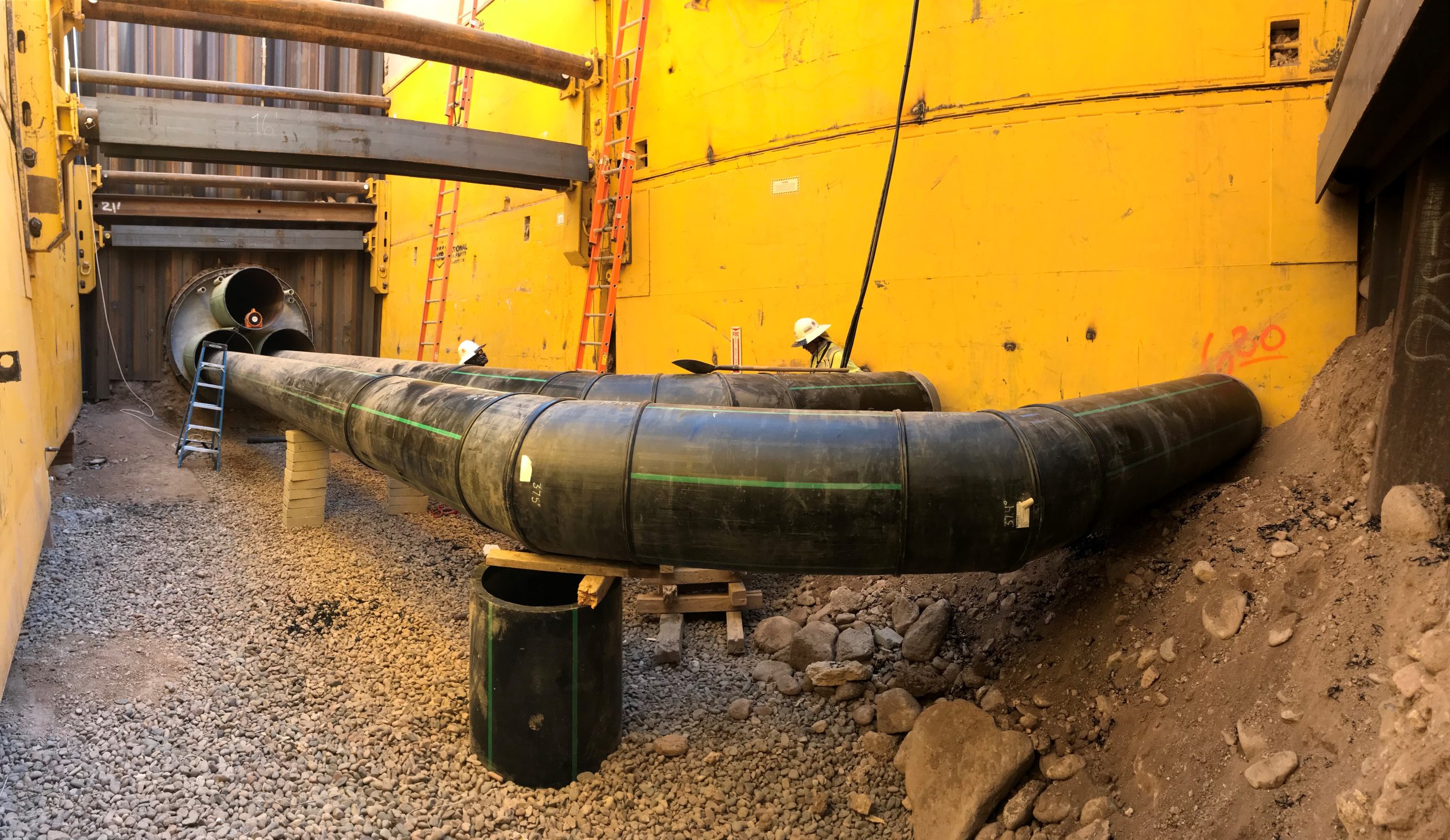Benefits of Trenchless Constructability & Design Among Different Delivery Methods – Part I

While the various forms of delivery methods – Construction Manager at Risk, Job Order Contracting, Design-Build, and Design-Bid-Build – will differ, one common variable that will always provide benefits for underground infrastructure is using a trenchless constructability and design consultant.
This type of partner provides clients with assistance in the planning, design, and construction of complex underground utility installation projects to confidently incorporate trenchless installation methods. The main services include conceptual design, construction consulting, construction management, design consulting, carrier pipe design, plan review, bore pit support and design, and claims avoidance.
Below is the Part I of the advantages, for the CMAR delivery type specifically, from consulting on the various methods of trenchless utility installation and on improving operational efficiency, manage risk, and improve end user experience. Regardless of the delivery method, it is essential to note that early involvement is key.
Construction Manager at Risk
In a CMAR scenario, where a property owner hires a construction manager to oversee the project from design to construction close-out and deliver it within a Guaranteed Maximum Price that is established during the bid process. So, of course, it is in the CM’s best interest to manage the project budget and schedule very closely to stay within the GMP.
How the Services Fit
How a TCD consultant’s services would fit well in a CMAR is particularly with early involvement (i.e., minimizing design changes later on); a collaborative approach to ensure sequencing/timing, equipment sharing, and not duplicating efforts; as well as risk mitigation to create a more streamlined process for the GMP.
For example, TCD can contribute to cost savings/value engineering by strategically recommending a reduction in wall thickness for casing. In fact, a recent project involving this recommendation resulted in hundreds of thousands of dollars in savings.
Another specific example could be leveraging shoring alternatives to account for pits being excavated adjacent to existing utilities, which could cause trench lines to collapse. While this is an added cost, it allows these additional expenses to be included as allowances in the GMP to protect both the owner and CMAR contractor.
Real-Life Examples
In a couple notable projects involving TCD’s consulting with the CMAR contractors from the beginning, it resulted in construction going very smoothly on the large and complex projects, with minimal changes or additional costs that were outside of the original plan.
As part of the City of Phoenix’s Drought Pipeline Project, SSC performed as a subcontractor for Sundt Construction to perform 6 – 86” tunnels that would carry a 66” waterline. The bores were performed under 6 intersections.
The method selected was hand/mechanical tunneling using a skid-steer equipped with either a grinder or hammer attachment and then hand trimming with a jackhammer. This method was chosen over a TBM because it did not require a reception pit since no head had to be pushed out and removed. This allowed us to stay out ahead of Sundt who could then dig up to our installation and tie in with their open cut installation when it worked for their schedule without worrying about multiple pits being open.
We had also performed all of the design potholing work on this project, and supported the construction with our potholing operations as well. We appreciated being part of the team from the beginning with both potholing and consulting on the tunnels – helping to advise on the best method as well as decide on the best placement of the bore pits and tunnels to meet project goals.
For more information: https://sscunderground.com/project/zone-3d4a-water-transmission-main/
On another phase of this project, SSC performed as a subcontractor to PCL Construction to perform 3 – 96” tunnels that would carry a 72” waterline.
SSC worked with PCL and the design engineers well in advance of construction to help design the tunnels on the project. The biggest challenge faced was designing the bore pits to fit in between all of the existing infrastructure in an active water treatment plant. The alignment that ended up being selected allowed the three tunnels to all tie together via four pits, the final one being where PCL could install valves and make connections to the existing lines. Three of the four pits that were in the main area could not be dug and shored using traditional methods and were instead built using soldier piles, lagging and gunite. This allowed for the pits to built-in configurations that were not rectangular.
Crews were onsite for almost 11 months to complete the 257’ of tunneling and also performed the installation of the carrier pipe and necessary grouting.
For more information: https://sscunderground.com/project/zone-3d-and-4a-improvements-program-wtp-booster-pump-stations/
“During an expedited Preconstruction process for a City of Phoenix Northwest Water and Wastewater Master Plan Project, SSC was brought on as an expert consultant to brainstorm trenchless excavation options. Sundt has worked with SSC multiple times over the years and is never disappointed by the effort and extensive knowledge they bring to any project. There were three different locations that were being evaluated to use trenchless excavation. They worked diligently to provide different trenchless methods, distances, size of tunnels, and show cost benefit analysis of each option. SSC provided valuable input on the long-lead procurement items associated with the scope, and all of this was done within a 3-month time span. SSC truly cares and is committed to serving the needs of every client and contractor they work with.” -- Janene Thomas, Project Manager at Sundt Construction
In this Part I series of the advantages of incorporating trenchless constructability and design consultants into construction projects, we dived into how the service fits in with the CMAR delivery method and real-life examples. Stay tuned for Part II, which explores the benefits of trenchless constructability and design consulting for JOC projects!